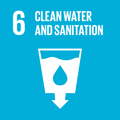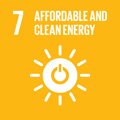- Docente: Roberto Verdone
- Credits: 3
- Language: English
- Teaching Mode: Traditional lectures
- Campus: Bologna
-
Corso:
First cycle degree programme (L) in
Electronics and Telecommunications Engineering (cod. 9065)
Also valid for Second cycle degree programme (LM) in Telecommunications Engineering (cod. 9205)
-
from Sep 22, 2023 to Dec 15, 2023
Learning outcomes
The student will be capable of identifying relevant and business-oriented applications of the IoT, the enabling wireless technologies and platforms, and predict network performance. Ten hours of team working will constitute a conceptual lab where ideas will be shared, compared and assessed under the supervision of the instructor.
Course contents
The syllabus is reported below. More info on the approach to the course can be found on www.robertoverdone.org.
Part I - Introduction (3 hours)
INT.1 IoT: Definition
INT.2 IoT: A Communication Perspective
INT.3 IoT: Application Domains
INT.4 IoT: General Framework
INT.5 The Course
Part II - Fundamental Tools (15 hours)
NFU.1 Fundamentals of Wireless Communications
NFU.2 Fundamentals of Wireless Networks
NMA.1 Fundamentals of Wireless Controlled and Random MAC
NMA.2 Aloha and S-Aloha in Compact Networks
NMA.3 CSMA in Compact Networks
NMA.4 CSMA in Sparse Networks: Hidden and Exposed Node Problem
RNA.1 Radio Network Architectures
EWT.1 Short Range Systems: 802.15.4 and Zigbee
EWT.2 Long Range Systems: LoRa and LoRaWAN
EWT.3 Long Range Systems: NB-IOT
EWT.4 5G
Part III - Making the IoT (6 hours)
APP.1 Cybersecurity in IoT
APP.2 Smart Cities
APP.3 Smart Manufacturing
LIC.1 Team Working: Identify Your Application (INVENT)
LIC.2 Team Working: Identify Your Wireless Technology and the HW/FW Platform (CONCEIVE)
LDA.1 Team Working: Design Your Network (DESIGN)
LDA.2 Team Working: Assess Your Network (ASSESS)
LPD.1 Present Your Idea
Part IV - Lab (12 hours)
LHO.1 Hands-on sessions with LoRaWAN
LHO.2 Hands-on sessions with NB-IOT
LHO.3 Hands-on sessions with 5GReadings/Bibliography
Slidesets made available by the instructor.
Teaching methods
The course is based on an innovative approach for a number of reasons;
1) after the first three hours of introduction in the class (INTRO),
2) 12 hours of lectures will be offered via pre-recorded videos that the student can watch whenever they want during the week without the need to attend the class (OFFLINE),
3) 9 hours will be spent in the class to consolidate the conceptual parts via numerical exercises, discussions on real world use-cases, team working sessions held in class (CLASS),
4) 12 hours of lectures will be based on hands-on sessions in the class (LAB).
The preliminar schedule is as follows (in case of unexpected problems, the instructor will provide updated schedules via virtuale.unibo.it).
Sept 22 - INTRO
Sept 29 - OFFLINE
Oct 6 - CLASS
Oct 13 - OFFLINE
Oct 20 - OFFLINE
Oct 27 - CLASS
Nov 3 - CLASS
Nov 10 - LAB
Nov 17 - LAB
Nov 24 - LAB
Dec 1 - LAB
Dec 15 - OFFLINEAssessment methods
The exam will consist of two parts: a written exam and a discussion of the outcomes of the group work.
The written exam will consist of some numerical exercises, based on the contents of Part I and II of the course, and a closed answer questionnaire with 30 questions.
For the discussion the students will provide a five-minute pitch; the pitch will either 1) focus on a selected IoT application describing the problem addressed (INVENT), the solution envisaged (CONCEIVE), the networking technologies identified (DESIGN), discussing the scalability of the solution (ASSESS), or will 2) present one of the hands-on activities performed including the numerical achievements.
The two parts will be made on the same date.
The outcome of the exam is pass or fail.
Teaching tools
Material provided by the instructor: slidesets, links, templates, datasets.
Office hours
See the website of Roberto Verdone
SDGs




This teaching activity contributes to the achievement of the Sustainable Development Goals of the UN 2030 Agenda.
